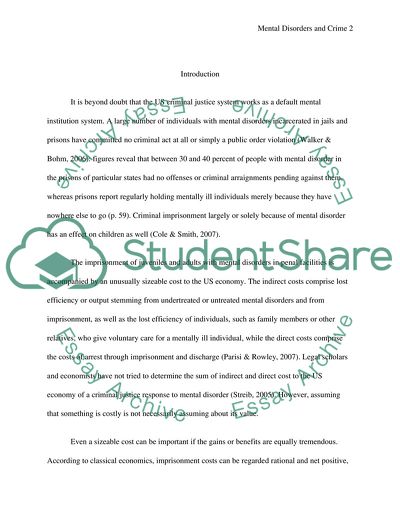Cite this document
(Mental Disorders and Crime Research Paper Example | Topics and Well Written Essays - 2000 words, n.d.)
Mental Disorders and Crime Research Paper Example | Topics and Well Written Essays - 2000 words. Retrieved from https://studentshare.org/psychology/1739565-mental-disorders-and-crime
Mental Disorders and Crime Research Paper Example | Topics and Well Written Essays - 2000 words. Retrieved from https://studentshare.org/psychology/1739565-mental-disorders-and-crime
(Mental Disorders and Crime Research Paper Example | Topics and Well Written Essays - 2000 Words)
Mental Disorders and Crime Research Paper Example | Topics and Well Written Essays - 2000 Words. https://studentshare.org/psychology/1739565-mental-disorders-and-crime.
Mental Disorders and Crime Research Paper Example | Topics and Well Written Essays - 2000 Words. https://studentshare.org/psychology/1739565-mental-disorders-and-crime.
“Mental Disorders and Crime Research Paper Example | Topics and Well Written Essays - 2000 Words”. https://studentshare.org/psychology/1739565-mental-disorders-and-crime.


